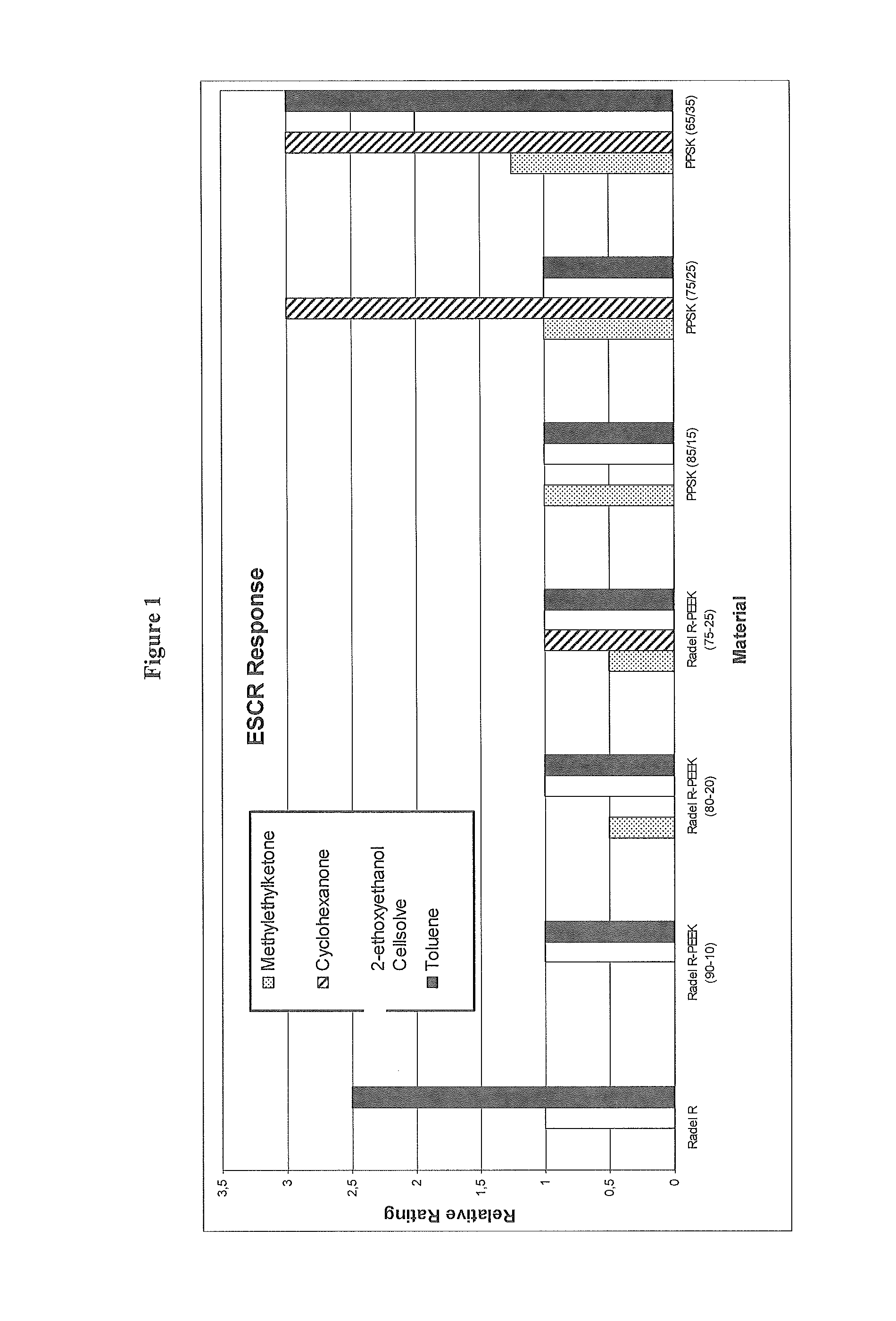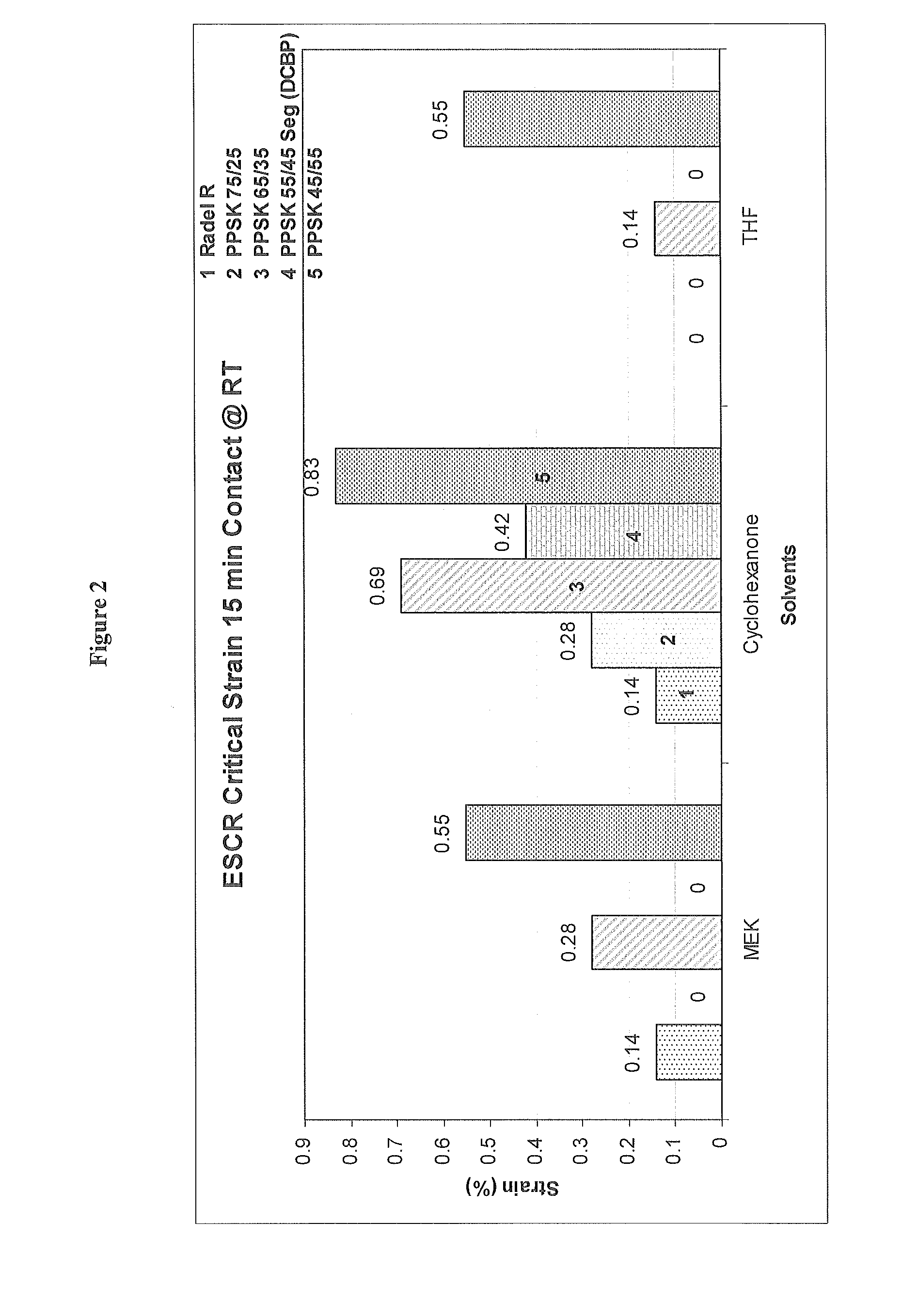Polyphenyl sulfone ketone copolymers
a polyphenyl sulfone and copolymer technology, applied in the field of polymers, can solve the problems of environmental stress cracking, high cost, and inability to meet the requirements of cleaning and sterilization, and achieve the effects of improving the resistance to chemical agents, excellent hydrolytic stability, and low creep
- Summary
- Abstract
- Description
- Claims
- Application Information
AI Technical Summary
Benefits of technology
Problems solved by technology
Method used
Image
Examples
examples
Preparation of Copolymers According to the Invention (Polyphenyl Sulfone ketone or PPSK)
[0110]Procedure to make PPSK (75 / 25) using 4,4′-difluorobenzophenone (DCDPS / DFBP)
[0111]To a one liter resin kettle equipped with an overhead agitator, nitrogen inlet, reflux condenser with a dean stark trap, was charged 76.3 g 4,4′-biphenol, 89.2 g of dichlorodiphenylsulfone, 22.6 g of 4,4′-difluorobenzophenone, 58.3 g of anhydrous potassium carbonate, and 375 g of diphenyl sulfone. The reaction mixture was evacuated and backfilled with dry nitrogen three times. The temperature was raised to 275° C. over 2-2.5 hours. The reaction was allowed to proceed with stirring and under a positive flow of nitrogen until the desired molecular weight was achieved. Water was collected in the dean stark trap during the polymerization. Dichlorodiphenylsulfone, 2.5 g, was then added and the reaction was allowed to proceed for another hour. The hot reaction mixture was poured into a stainless steel pan and allowed...
PUM
| Property | Measurement | Unit |
|---|---|---|
| temperature | aaaaa | aaaaa |
| temperature | aaaaa | aaaaa |
| temperature | aaaaa | aaaaa |
Abstract
Description
Claims
Application Information
 Login to View More
Login to View More - R&D
- Intellectual Property
- Life Sciences
- Materials
- Tech Scout
- Unparalleled Data Quality
- Higher Quality Content
- 60% Fewer Hallucinations
Browse by: Latest US Patents, China's latest patents, Technical Efficacy Thesaurus, Application Domain, Technology Topic, Popular Technical Reports.
© 2025 PatSnap. All rights reserved.Legal|Privacy policy|Modern Slavery Act Transparency Statement|Sitemap|About US| Contact US: help@patsnap.com



